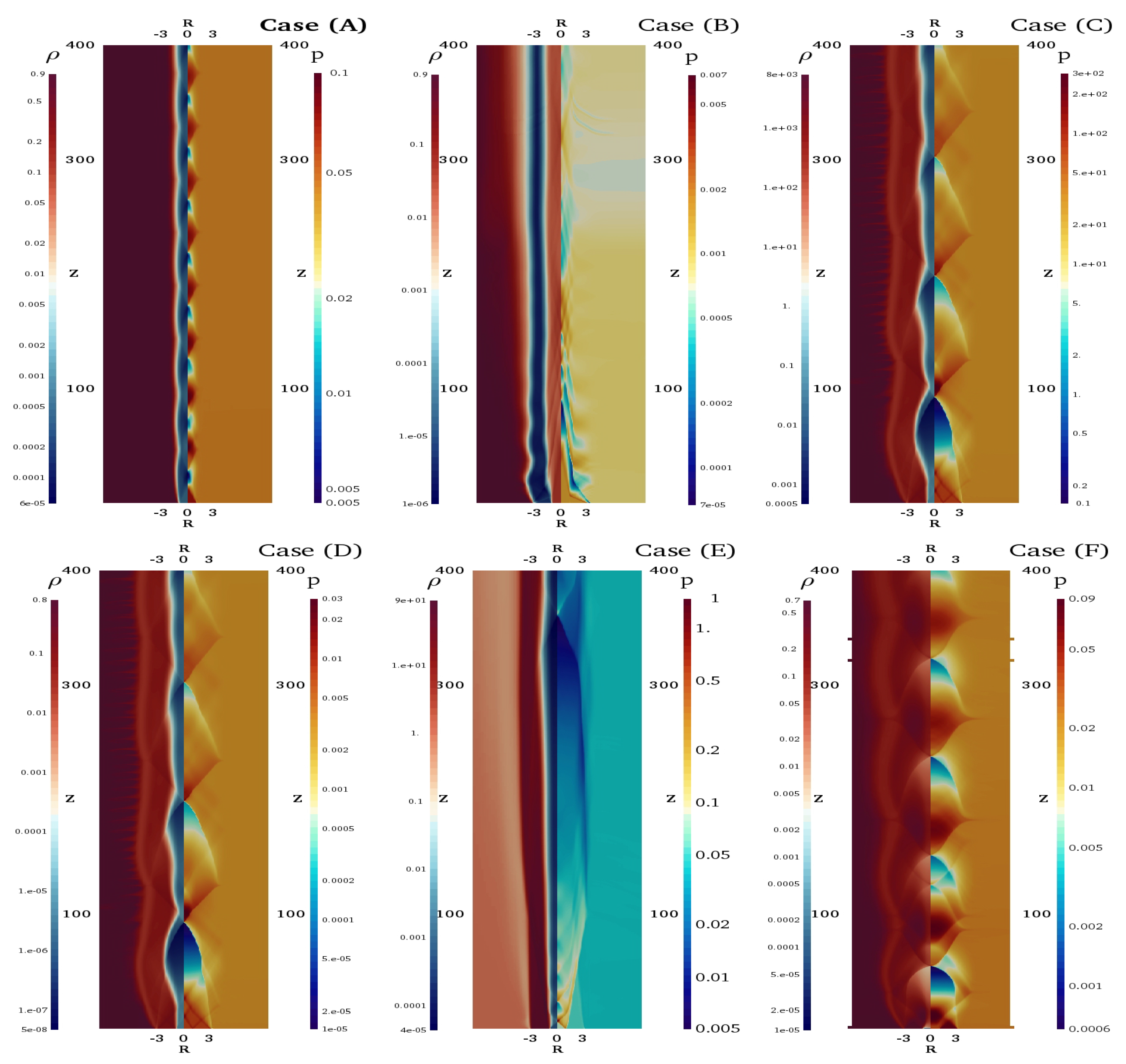Knots in Relativistic Transverse Stratified Jets
Abstract
:1. Introduction
2. Model
3. Results and Discussion
Acknowledgments
Author Contributions
Conflicts of Interest
References
- Giroletti, M.; Giovannini, G.; Feretti, L.; Cotton, W.D.; Edwards, P.G.; Lara, L.; Marscher, A.P.; Mattox, J.R.; Piner, B.G.; Venturi, T. Parsec Scale Properties of Markarian 501. Astrophys. J. 2004, 600, 127–140. [Google Scholar] [CrossRef]
- Giovannini, G. The radio jet velocities at high resolution. New Astron. Rev. 2003, 47, 551–555. [Google Scholar] [CrossRef]
- Attridge, J.M.; Roberts, D.H.; Wardle, J.F.C. Radio Jet-Ambient Medium Interactions on Parsec Scales in the Blazar 1055+018*. Astrophys. J. 1999, 518, 87. [Google Scholar] [CrossRef]
- Daly, R.A.; Marscher, A.P. The gasdynamics of compact relativistic jets. Astrophys. J. 1988, 334, 539–551. [Google Scholar] [CrossRef]
- Blandford, R.D.; Payne, D.G. Hydromagnetic flows from accretion discs and the production of radio jets. Mon. Not. R. Astron. Soc. 1982, 199, 883–903. [Google Scholar] [CrossRef]
- Blandford, R.D.; Znajek, R.L. Electromagnetic extraction of energy from Kerr black holes. Mon. Not. R. Astron. Soc. 1977, 179, 433–456. [Google Scholar] [CrossRef]
- Meliani, Z.; Sauty, C.; Vlahakis, N.; Tsinganos, K.; Trussoni, E. Nonradial and nonpolytropic astrophysical outflows VIII. A GRMHD generalization for relativistic jets. Astron. Astrophys. 2006, 447, 797–812. [Google Scholar] [CrossRef]
- McKinney, J.C.; Blandford, R.D. Stability of relativistic jets from rotating, accreting black holes via fully three-dimensional magnetohydrodynamic simulations. Mon. Not. R. Astron. Soc. 2009, 394, L126–L130. [Google Scholar] [CrossRef]
- Hervet, O.; Meliani, Z.; Zech, A.; Boisson, C.; Cayatte, V.; Sauty, C.; Sol, H. Shocks in relativistic transverse stratified jets, a new paradigm for radio-loud AGN. arXiv, 2017; arXiv:astro-ph/1705.10556. [Google Scholar]
- Rawlings, S.; Saunders, R. Evidence for a common central-engine mechanism in all extragalactic radio sources. Nature 1991, 349, 138–140. [Google Scholar] [CrossRef]
- Lister, M.L.; Cohen, M.H.; Homan, D.C.; Kadler, M.; Kellermann, K.I.; Kovalev, Y.Y.; Ros, E.; Savolainen, T.; Zensus, J.A. MOJAVE: Monitoring of Jets in Active Galactic Nuclei with VLBA Experiments. VI. Kinematics Analysis of a Complete Sample of Blazar Jets. Astron. J. 2009, 138, 1874–1892. [Google Scholar] [CrossRef]

| Inner Jet | Outer Jet | Structured Jet | |||||
|---|---|---|---|---|---|---|---|
| Case | Two-Component Jet | ||||||
| A | 1 | No | |||||
| B | Yes | ||||||
| C | Yes | ||||||
| D | 6 | Yes | |||||
| E | Yes | ||||||
| F | 0 | 0 | 1 | Yes | |||
© 2017 by the authors. Licensee MDPI, Basel, Switzerland. This article is an open access article distributed under the terms and conditions of the Creative Commons Attribution (CC BY) license (http://creativecommons.org/licenses/by/4.0/).
Share and Cite
Meliani, Z.; Hervet, O. Knots in Relativistic Transverse Stratified Jets. Galaxies 2017, 5, 50. https://doi.org/10.3390/galaxies5030050
Meliani Z, Hervet O. Knots in Relativistic Transverse Stratified Jets. Galaxies. 2017; 5(3):50. https://doi.org/10.3390/galaxies5030050
Chicago/Turabian StyleMeliani, Zakaria, and Olivier Hervet. 2017. "Knots in Relativistic Transverse Stratified Jets" Galaxies 5, no. 3: 50. https://doi.org/10.3390/galaxies5030050





